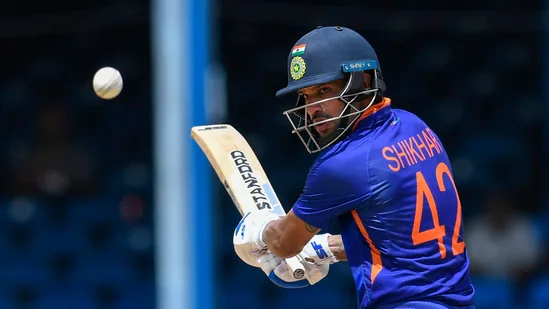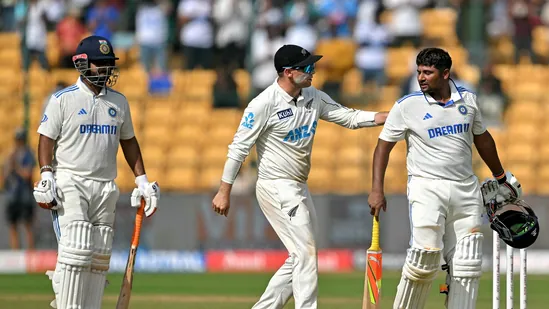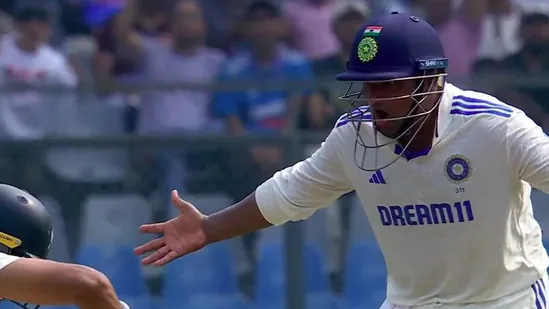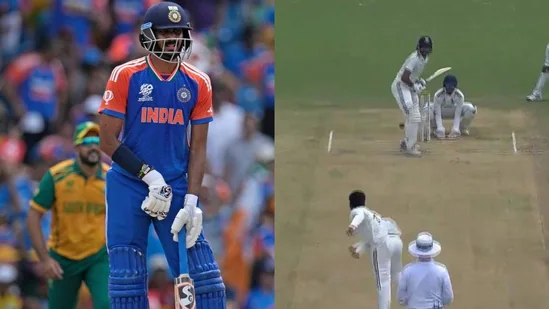India's Intent Fails to Convert into Runs
On Sunday, the delivery wasn't particularly short, but Rohit Sharma still went for it aggressively. Known for his prowess in the pull shot, it's usually presumed that he will execute it perfectly every time. However, this time he didn't quite get it right. Split-second decisions in cricket can be unpredictable. India, chasing a target of 147, haven't been in their best batting form recently. Sharma, in particular, had been struggling with an average of just 13.55 in his previous nine innings. Perhaps he should consider saving that shot for later on in the innings.
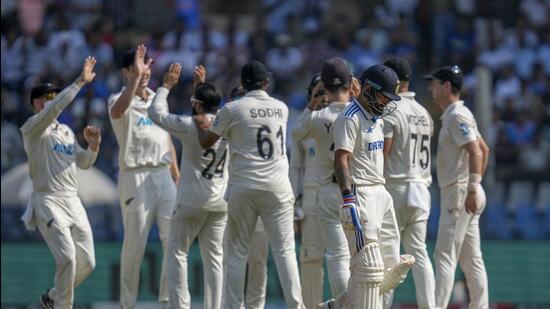
Not just Sharma. Sarfaraz Khan went for a sweep, Washington Sundar attempted a slog sweep and Ravichandran Ashwin opted for the reverse, all when a decent partnership could have made New Zealand flinch. Skepticism thus had a field day in the aftermath of India’s stupefying implosion, raising serious questions over the heightened effort to exude ‘intent’ in their batting, especially since the Kanpur Test where they had creamed Bangladesh for 285 at more than eight runs per over.
That innings could and should have been treated as a one-off, not only because of the rain-induced circumstances but also Bangladesh’s insipid bowling. But India tried to take a leaf out of that book against better rehearsed New Zealand spinners on pitches they weren’t prepared to take them on. The result was catastrophic. In six innings India averaged 21.55 runs per wicket, their lowest in a three-match home Test series after 20.21 against England in 1976-77.
Here’s the twist though. India’s run rate across three Tests was 3.97, their highest in a home series defeat since the 1983-84 loss to West Indies where India had scored at 3.10 runs per over. It’s a staggering number on its own. But only after pitting it with India’s scores at Bengaluru, Pune and Mumbai can the pointlessness dawn on the cheerleaders of batting intent. It naturally prompts a burning question: What is India’s natural game?
Because when England were pulling the Bazball trigger earlier this year, India were firm about not being baited into that approach. India ended that series averaging 39.74 runs per wicket. In the past two months however, Sharma and Gautam have actively endorsed the ‘high risk, high reward’ brand of batting. But it looks more forced than natural. Take for example Sharma, who has been dismissed by pacers four out of six times on pitches that—barring Bengaluru—have favoured spinners. If the dismissals were concerning, more disconcerting was his explanation.
“I haven’t defended a lot in this series because I haven’t been there much to defend,” Sharma said after the Mumbai defeat. “I have to look at my own game and try and see what best I can do. When I go to bat, I always think about how I can put the team in the best situation of the game so sometimes when the openers go in, they set the tone.”
Setting the tone doesn’t always translate to scoring quick runs. But Sharma, who has had a phenomenal year in T20 cricket, seems to be relying on one solution for all formats. And that has severely hit India’s returns, with the opening stand yielding only 25.6 runs on an average, down from 48.33 against England at home only eight months ago. Continuing in the same vein—barring a couple of innings from Shubman Gill and Rishabh Pant—has only made India’s batting look more untenable. No planning, zero patience and predictable front-foot play against spinners meant India were walking targets, all in pursuit of a logic-defying batting approach.
Not that it was necessary. Low-scoring affairs against Australia at Indore and Delhi were instrumental in lowering India’s average runs per wicket to 30.62 but it still can’t bury the 400 and 571 India scored at Nagpur and Ahmedabad with run rates of 2.86 and 3.19 respectively. At Ahmedabad alone, India batted for 178.5 overs, more than half of their entire stay (325.3 overs) this series. More instructive was the series against England earlier this year, where India were all out for 202 chasing 231 at Hyderabad but followed it up with scores of 396, 255, 445, 430/4d, 307, 192/5 and 477. India’s run rate during that series? 3.49.
Trying to improve on 3.49 against Bangladesh was still understandable as India came out unscathed and victorious with a run rate of 5.04 after the cameo at Kanpur. But to confront New Zealand in the same gear was probably a complacent reaction, the downside of which India were clearly not prepared for. More puzzling is how the more challenging pitches weren’t taken into account, making it a classic case of biting off more than one can chew as India’s batters struggled against Mitchell Santner’s probing spin. Runs were still scored at a healthy rate, but not for sustained periods. To drop to 21.55 runs per wicket from 39.74, is this what intent looks like?
Stay informed with the... Continue reading with HT Premium Subscription Daily E Paper I Premium Articles I Brunch E Magazine I Daily Infographics Subscribe Now @1199/year Already Subscribed? Sign InRELATED STORIES






LATEST NEWS
